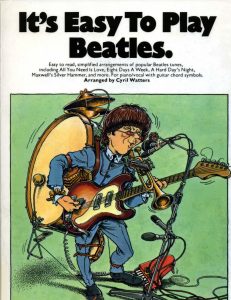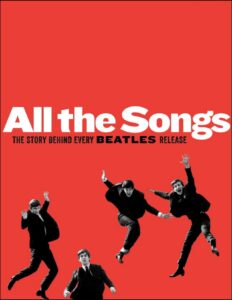Come join us now, and enjoy playing your beloved music and browse through great scores of every level and styles!
Can’t find the songbook you’re looking for? Please, email us at: sheetmusiclibrarypdf@gmail.com We’d like to help you!
The Beatles: the 100 most inspiring musicians of all time
The principal members were Paul McCartney (b. June 18, 1942, Liverpool, Merseyside, Eng.), John Lennon (b. Oct. 9, 1940, Liverpool, Merseyside, Eng.—d. Dec. 8, 1980, New York, N.Y., U.S.), George Harrison (b. Feb. 25, 1943, Liverpool, Merseyside, Eng.—d. Nov. 29, 2001, Los Angeles, Calif., U.S.), and Ringo Starr (b. July 7, 1940, Liverpool, Merseyside, Eng.). Other early members included Stuart Sutcliffe (b. June 23, 1940, Edinburgh, Scot.—d. April 10, 1962, Hamburg, W. Ger.) and Pete Best (b. Nov. 24, 1941, Madras [now Chennai], India).
The Beatles were a British musical quartet and a global cynosure for the hopes and dreams of a generation that came of age in the 1960s.
Formed around the nucleus of Lennon and McCartney, who first performed together in Liverpool in 1957, the group grew out of a shared enthusiasm for American rock and roll. Lennon, a guitarist and singer, and McCartney, a bassist and singer, were largely self-taught as musicians.
Precocious composers, they gathered around themselves a changing cast of accompanists, adding by the end of 1957 Harrison, a lead guitarist, and then, in 1960 for several formative months, Sutcliffe, who brought into the band a brooding sense of bohemian style. After dabbling in skiffle, a jaunty sort of folk music popular in Britain in the late 1950s, and assuming several different names (the Quarrymen, the Silver Beetles, and, finally, The Beatles), the band added a drummer, Best, and joined a small but
booming “beat music” scene.
Browse in the Library:
Or browse in the categories menus & download the Library Catalog PDF:

In autumn 1961, Brian Epstein, a local Liverpool record store manager, saw the band, fell in love, became their manager, and proceeded to bombard the major British music companies with letters and tape recordings of the band. The group finally won a contract with Parlophone, a subsidiary of the giant EMI group of music labels.
The man in charge of their career at Parlophone was George Martin, a classically trained musician who from the start put his stamp on the Beatles, first by suggesting the band hire a more polished drummer (they chose Starr) and then by rearranging their second recorded song (and first big British hit), “Please Please Me.”
Throughout the winter and into the spring of 1963, the Beatles continued their rise to fame in England by producing spirited recordings of original tunes and also by playing classic American rock and roll on a variety of
radio programs. In these months, fascination with the Beatles breached the normal barriers of taste, class, and age, transforming their recordings and live performances into matters of widespread public comment.
In the fall of that year, when they made a couple of appearances on British television, the evidence of popular frenzy prompted British newspapermen to coin a new word for the phenomenon: Beatlemania. In early 1964, after equally tumultuous appearances on American television, the same phenomenon erupted in the United States and provoked a so-called British Invasion of Beatles imitators from the United Kingdom.
Come join us now, and enjoy playing your beloved music and browse through great scores of every level and styles!
Can’t find the songbook you’re looking for? Please, email us at: sheetmusiclibrarypdf@gmail.com We’d like to help you!
Beatlemania was something new. Musicians performing in the 19th century certainly excited a frenzy, but that was before the mass media created the possibility of collective frenzy. Later pop music idols sold similarly large numbers of records, but without provoking anything approaching the hysteria caused by the Beatles. By the summer of 1964, when the Beatles appeared in A Hard Day’s Night, a movie that dramatized the phenomenon of Beatlemania, the band’s effect was evident around the world.

The popular hubbub convinced Lennon and McCartney of their songwriting abilities and sparked an outpouring of creative experimentation all but unprecedented in the history of rock music. Between 1965 and 1967 the music of the Beatles rapidly changed and evolved, becoming ever more subtle, sophisticated, and varied.
Their repertoire in these years ranged from the chamber pop ballad “Yesterday” and the enigmatic folk tune “Norwegian Wood” (both in 1965) to the hallucinatory hard rock song “Tomorrow Never Knows” (1966), with a lyric inspired by Timothy Leary’s handbook The Psychedelic Experience (1964). It also included the carnivalesque soundscape of “Being for the Benefit of Mr. Kite!” (1967), which featured stream-ofconsciousness lyrics by Lennon and a typically imaginative arrangement (by George Martin) built around randomly spliced-together snippets of recorded steam organs.
In 1966, the Beatles announced their retirement from public performing to concentrate on exploiting the full resources of the recording studio. A year later, in June 1967, this period of widely watched creative renewal was climaxed by the release of Sgt. Pepper’s Lonely Hearts Club Band, an album avidly greeted by young people around the world as indisputable evidence not only of the band’s genius but also of the era’s utopian promise. More than a band of musicians, the Beatles had come to personify, certainly in the minds of millions of young listeners, the joys of a new counterculture of hedonism and uninhibited experimentation.
The Beatles sheet music download.
In those years, the Beatles effectively reinvented the meaning of rock and roll as a cultural form. The American artists they chose to emulate—including Chuck Berry, Little Richard, Elvis Presley, the Everly Brothers, Buddy Holly, the rock composers Jerry Leiber and Mike Stoller, and, after 1964, folksinger Bob Dylan, among others— became widely regarded as canonic sources of inspiration, offering “classical” models for aspiring younger rock musicians. At the same time, the original songs the Beatles wrote and recorded dramatically expanded the musical range and expressive scope of the genre they had inherited.

After 1968, and the eruption of student protest movements in countries as different as Mexico and France, the Beatles insensibly surrendered their role as de facto leaders of an inchoate global youth culture. They nevertheless continued for several more years to record and release new music and maintained a level of popularity rarely rivaled before or since. The band continued to enjoy widespread popularity. The following year Abbey Road went on to become one of the band’s best-loved and biggest-selling albums.
Meanwhile, personal disagreements magnified by the stress of symbolizing the dreams of a generation had begun to tear the band apart. Lennon and McCartney fell into bickering and mutual accusations of ill will, and in the spring of 1970 the Beatles formally disbanded. In the years that followed, all four members went on to produce solo albums of variable quality and popularity. Lennon released a corrosive set of songs with his new wife, Yoko Ono, and McCartney went on to form a band, Wings, that turned
out a fair number of commercially successful recordings in the 1970s. Starr and Harrison, too, initially had some success as solo artists.
In 1980, Lennon was murdered by a demented fan outside the Dakota, an apartment building in New York City known for its celebrity tenants. The event provoked a global outpouring of grief. Lennon is memorialized in Strawberry Fields, a section of Central Park across from the Dakota that Yoko Ono landscaped in her husband’s honour.
In the years that followed, the surviving former Beatles continued to record and perform as solo artists. McCartney in particular remained musically active, both in the pop field, producing new albums every few years, and in the field of classical music—in 1991 he completed Liverpool Oratorio; and in 1999 he released a new classical album, Working Classical. McCartney was knighted by the queen of England in 1997. Starr was also very visible in the 1990s, touring annually with his All-Star Band, a rotating
group of rock veterans playing their hits on the summertime concert circuit.
Beginning in 1988, Harrison recorded with Bob Dylan, Tom Petty, Jeff Lynne, and Roy Orbison in a loose amalgam known as the Traveling Wilburys, but, for most of the 1980s and ’90s, he had a low profile as a musician while acting as the producer of several successful films. After surviving a knife attack at his home in 1999, Harrison succumbed to a protracted battle with cancer in 2001.
Early in the 1990s, McCartney, Harrison, and Starr had joined to add harmonies to two previously unreleased vocal recordings by Lennon. These new songs by “the Beatles” served as a pretext for yet another publicity blitz, aimed at creating a market for a lavishly produced quasi historical series of archival recordings assembled under the supervision of the band and released in 1995 and 1996 as The Beatles Anthology, a collection of six compact discs that supplemented a 10-hour-long authorized video documentary of the same name.
A compilation of the band’s number one singles, 1, appeared in 2000 and enjoyed worldwide success, topping the charts in such countries as England and the United States.
The Beatles were inducted into the Rock and Roll Hall of Fame in 1988, and Lennon (1994), McCartney (1999), and Harrison (2004) were also inducted as solo performers. In April 2009, it was announced that on September 9 there would be a simultaneous release of specially packaged,
digitally remastered versions of the Beatles’ entire catalog and a Beatles’ version of the popular electronic music game Rock Band.
The Beatles Greatest Hits Full Album 2021
Track List:
00:00 – Let it Be 03:18 – Hey Jude 08:03 – A Day in the Life 11:46 – Yesterday 13:55 – Here Comes the Sun 16:54 – Strawberry Fields Forever 21:02 – In My Life 23:59 – Something 27:04 – Here Comes the Sun 30:04 – Strawberry Fields Forever 34:03 – Penny Lane 37:30 – Let it Be 40:55 – A Day in the Life 1:19:39 – We Can Work it Out
Please, subscribe to our Library.
If you are already a subscriber, please, check our NEW SCORES’ page every month for new sheet music. THANK YOU!
